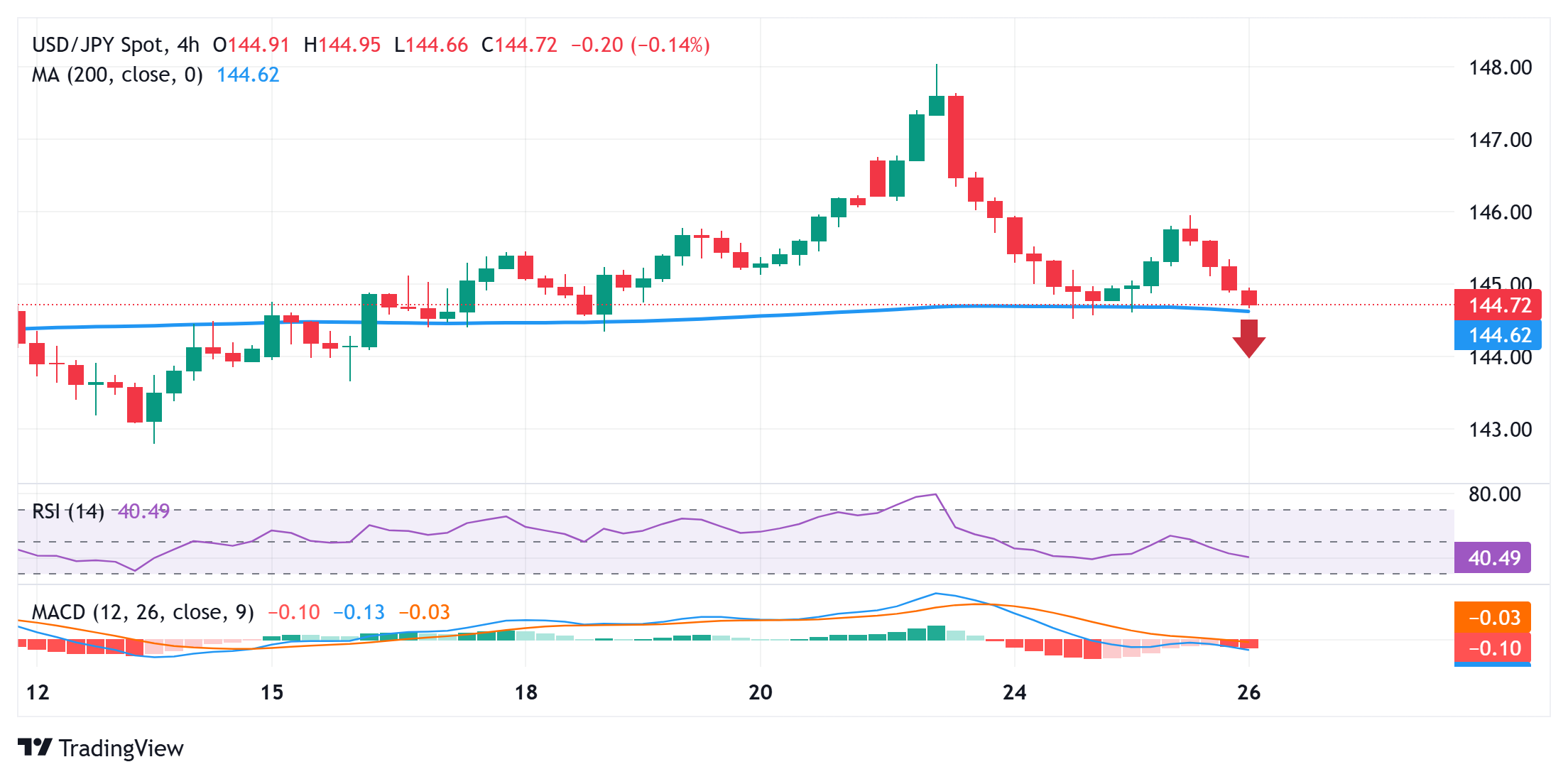Physical Address
304 North Cardinal St.
Dorchester Center, MA 02124
Physical Address
304 North Cardinal St.
Dorchester Center, MA 02124

The Japanese Yen (JPY) intraday buying remains unabated through the early European session on Thursday, which, along with a broadly weaker US Dollar (USD), drags the USD/JPY pair to a nearly two-week low in the last hour. The growing acceptance that the Bank of Japan (BoJ) will hike interest rates further amid signs of broadening inflation in Japan turns out to be a key factor that continues to underpin the JPY.
Meanwhile, reports that US President Donald Trump was considering replacing Federal Reserve (Fed) Chair Jerome Powell fuels concerns over the future independence of the central bank and further underpins the JPY’s safe-haven status. Moreover, the Trump-Powell standoff and Fed rate cut bets drag the USD to over a three-year low, which is seen as another factor exerting downward pressure on the USD/JPY pair.

The overnight failure ahead of the 146.00 mark and a subsequent break below the 200-period Simple Moving Average (SMA) on the 4-hour chart, currently around the 144.70-144.65 region, will be seen as a key trigger for the USD/JPY bears. Given that oscillators on hourly/daily charts have just started gaining negative traction, spot prices might then accelerate the fall towards the 144.00 round figure en route to the 143.70-143.65 region before eventually dropping to test sub-143.00 levels.
On the flip side, any attempted recovery back above the 145.00 psychological mark is more likely to attract fresh sellers near the 145.25-145.35 static barrier and remain capped near the 146.00 mark. The latter should act as a pivotal point, which if cleared could shift the near-term bias in favor of bulls and lift the USD/JPY pair to the 146.65-146.70 region en route to the 147.00 round figure. The momentum could extend further towards the 147.45-147.50 hurdle before the pair makes a fresh attempt to conquer the 148.00 mark.
The table below shows the percentage change of US Dollar (USD) against listed major currencies today. US Dollar was the strongest against the Canadian Dollar.
| USD | EUR | GBP | JPY | CAD | AUD | NZD | CHF | |
|---|---|---|---|---|---|---|---|---|
| USD | -0.37% | -0.56% | -0.71% | -0.17% | -0.42% | -0.30% | -0.42% | |
| EUR | 0.37% | -0.12% | -0.37% | 0.23% | -0.01% | 0.09% | -0.02% | |
| GBP | 0.56% | 0.12% | -0.24% | 0.36% | 0.12% | 0.23% | 0.10% | |
| JPY | 0.71% | 0.37% | 0.24% | 0.57% | 0.34% | 0.41% | 0.32% | |
| CAD | 0.17% | -0.23% | -0.36% | -0.57% | -0.23% | -0.22% | -0.25% | |
| AUD | 0.42% | 0.00% | -0.12% | -0.34% | 0.23% | 0.02% | -0.01% | |
| NZD | 0.30% | -0.09% | -0.23% | -0.41% | 0.22% | -0.02% | -0.03% | |
| CHF | 0.42% | 0.02% | -0.10% | -0.32% | 0.25% | 0.01% | 0.03% |
The heat map shows percentage changes of major currencies against each other. The base currency is picked from the left column, while the quote currency is picked from the top row. For example, if you pick the US Dollar from the left column and move along the horizontal line to the Japanese Yen, the percentage change displayed in the box will represent USD (base)/JPY (quote).